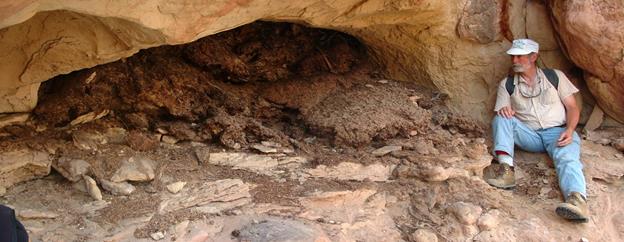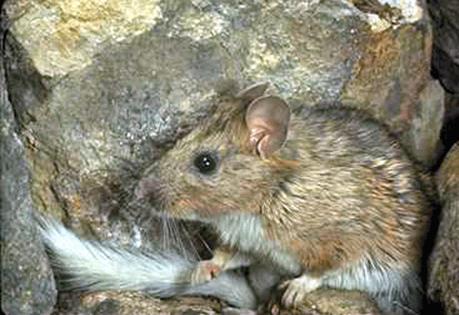Cought a rat in our Stores, which had done some mischief, this rat was about the Sise of a Comn. large rat, larger ears, long whiskers & toes, with a tail long & hairey like a ground Squirel, verry fine fur and lighter than the Common rat. Wind to day as usial from the S. W. and hard all the after part of the day, those winds are also [air?] Cool and generally verry hard. William Clark, 1805, near Great Falls, Montana
This is a handsome mid-sized rodent that can be found in a wide range of habitats in western North America from sagebrush deserts to old-growth forests and at elevations up to 14,000 ft. They can be found from the Canadian arctic to Arizona and New Mexico and east to Nebraska and the Dakotas. Adults are about 11 – 18 inches (half of this is the tail) and can weigh up to 1.3 pounds. Males weigh about 50% more than females.
These are commonly referred to as “pack rats” as they build large “middens” out of twigs and brush, feces, and other material that is solidified with crystallized urine, often adding on to these over the years. These middens can be quite large, often found in crevices of outcrops or cliffs.

In the Pacific NW they also are known to make use of hollow trees, logs, and coarse woody debris for nesting. Occasionally they will make use of tree cavities created by larger woodpeckers such as the pileated woodpecker.
And woodrats have an affection for shiny objects and often steal away with camping objects that find their fancy, which they add as decoration to the midden. I’ve seen bottle caps, plastic beads, a spoon, and a hairband in woodrat nests in the California desert. A nest, where the young are born and raised, is usually within the larger midden but sometimes may be a separate unit.
Woodrats occur in small family groups with a patchy distribution across the landscape, possibly a way of portioning resources. An estimated 80 acres is needed for a family group. Males are territorial and will aggressively defend dens and foraging areas. Young are born in the spring after a gestation period of 30 days or so. Females only have 4 nipples so litters of more than 4 are unlikely to survive. Females typically have just one litter per year – but in the southern part of their range they may have 2 litters per year. The young are born altricial – eyes closed and helpless – and only the female helps raise the young. The young wean after 30 days and may live to 3 or 4 years. They are nocturnal animals and are active all year long. There is some evidence that woodrats use a form of echolocation at night and in caves for getting around, emitting soft squeaks and listening to the acoustic bounces to help them navigate.
Woodrats are pretty flexible when it comes to food and will forage on berries, leaves, forbs, and fungi. Recorded food items include leaves of aspen, cherry, rose, snowberry, currants, willows, and elderberries. In turn they are preyed upon by spotted owls, great-horned owls, boreal owl, marten, fisher, bobcat, and others. Interestingly they may be taken by rattlesnakes during the summer by the snakes may use woodrat middens as hibernation stations during the winter. Woodrats do not need to drink water as they get all the water they need from their forage.
In the Pacific Northwest they have a special place in mountaineering lore and are referred to as snafflehounds. The term is more generally applied to any small rodent that annoys campers by chewing on boots, shoelaces, and climbing equipment – or just becoming a nuisance at night, rummaging your pack for food. But the main suspect is the busy tailed woodrat, which is at home at high altitudes. Woe is the climber who, stuck on a ledge unexpectedly for the evening, is sure to become a snafflehound magnet and get little sleep.
On a handful of occasions I’ve managed to be too slow or misread a long route and been forced to sleep on a ledge without the comfort of a sleeping bag, etc. Once, at 10,000 ft., insult to injury – we had to endure the onslaught of a small tribe of persistent snaffelhounds all night – trying to raid our limited food supply, jumping across your body, sitting on you pullover hat while on your head – and generally not allowing sleep. Thanks. Their notoriety in the Cascades has earned them naming rights of prominent climbing features – such as the large Snafflehound Ledge on Castle Rock in Tumwater Canyon.
I conducted some small mammal trapping along the Klamath River years ago associated with studies on the Klamath Dam complex. We would often catch woodrats in our live traps – you could tell you got one by the weight of the trap. A couple times I made the mistake of trying to open the trap door to peek at our catch before dumping it in a canvas bag. Big mistake! They were way too quick and would spring out of the small opening – startling you, bounding off your shoulder as they found their freedom.
